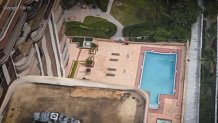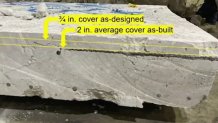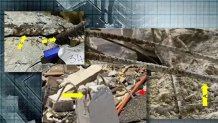It’s been two years since, seemingly out of nowhere, Champlain Towers South collapsed in Surfside.
But buildings don’t collapse for no reason at all, and engineers say more than one reason is usually to blame.
Definitive answers into what happened in Surfside may be two years away; the National Institute of Standards and Technology, the federal agency investigating the collapse, estimates it will release its findings in May 2025.
Get South Florida local news, weather forecasts and entertainment stories to your inbox. Sign up for NBC South Florida newsletters.
But they and other engineers have a leading suspect when it comes to what they call the initiating event, the same area NBC6 first focused on within hours of the collapse: the pool deck.
NIST has said there are four key aspects to the investigation: how the building was designed, constructed, modified and degraded.
And on all four points, the pool deck at Champlain Towers is screaming for attention.
“The conditions that existed in the pool deck slab at the time represented a serious safety concern for the building,” said Glenn Bell, NIST associate lead investigator at a public hearing earlier this month.
DESIGN
Bell said the pool deck was not designed to the code that existed in 1981, pointing out areas where the connections between the columns and the deck slab were severely weak.
“In the most severe of these understrength areas, the strength provided by the design was only about half of that required by the original codes and standards,” Bell said.
Yet it passed inspection by the Town of Surfside back in 1981.

“If they missed it by a factor of two, the authority having jurisdiction, the Town of Surfside and their building department, may not have had the time or the skills to assess punching shear deficiency by virtue of review of the plans,” said NIST advisory committee member Gary Klein.
Punching shear, in this instance, is when the load of a deck sitting on a column is too great, so the deck collapses around the column.
Allyn Kilsheimer, the engineer brought in by Surfside to lead its investigation, agrees there were “a number of design flaws in the original building based on the drawings we were able to find.”
But, he said, in 1980 there were few if any building departments that would have reviewed the plans and did its own calculations on whether the loads exceeded capacity in the structural design.
They wouldn’t have done “anything but look at the drawings and make sure an engineer’s seal was on it,” Kilsheimer said.
CONSTRUCTION
So far, investigators have found areas where the construction was even worse than the plans.
For example, too much steel was crammed into some columns.
And reinforcement bars were encased two inches down into the pool deck slab, when it should’ve been only three-quarters of an inch.
“If it’s down two inches, it changes the capacity of the deck,” Kilsheimer said, though he would need access to the debris to confirm there wasn’t another bar higher in the slab than shown in the NIST photo released last week.

“We don’t know if they were looking at just the low bar. The photograph was one bar,” he said.
That one bar would lower capacity on the deck and could lead to sagging between columns, called deflections.
And the models used by NIST suggest the largest deflections were close to the south wall, the very place witnesses told us they first saw the deck collapse into the garage below.
Seven minutes later, most of the building followed.
MODIFICATIONS
Making matters worse, the deck was modified over the years, with new heavy pavers and sand placed atop the old. And planters not in the original drawings, but added later, added weight and forces that over time can cause problems. Cracking near the connection between the deck and a wall where the planters once sat was noted just days before the collapse, and NIST has found evidence of sagging in that area.
“We know that concrete under sustained load is weaker than concrete under short term loading and the pool deck had a sustained load for 40 years,” Klein said.
DEGRADATION
Some of what remained degraded.
Steel reinforcement inside the concrete corroded, as salt air, water and other contaminants ate away at it.
“If you get corrosion to the standpoint of losing material and you’ve lost a substantial amount of material that could have an impact,” Kilsheimer said, while again saying more analysis would need to be done to determine the extent of that impact.

PRELIMINARY ASSESSMENT
All four aspects of the investigation cast suspicion on the pool deck, with Jack Moehle, a member of the board overseeing the federal investigation, summing it up like this: “It’s lightly reinforced, it has design deficiencies and construction errors, it was heavily stressed, and it showed signs of deterioration. So it’s highly suspect that failure initiation due to punching could’ve happened there.”
That’s as far as NIST will go for now, as there’s still a lot of investigation to be done, including on the composition of the concrete in the slabs and columns, the condition of the ground and water beneath the building, and on the loads and strength in the towers.
But once the pool deck went, engineers say, the forces transferred to other parts of the structure would’ve been enough to bring sections down -- as we saw happen so tragically two years ago.

